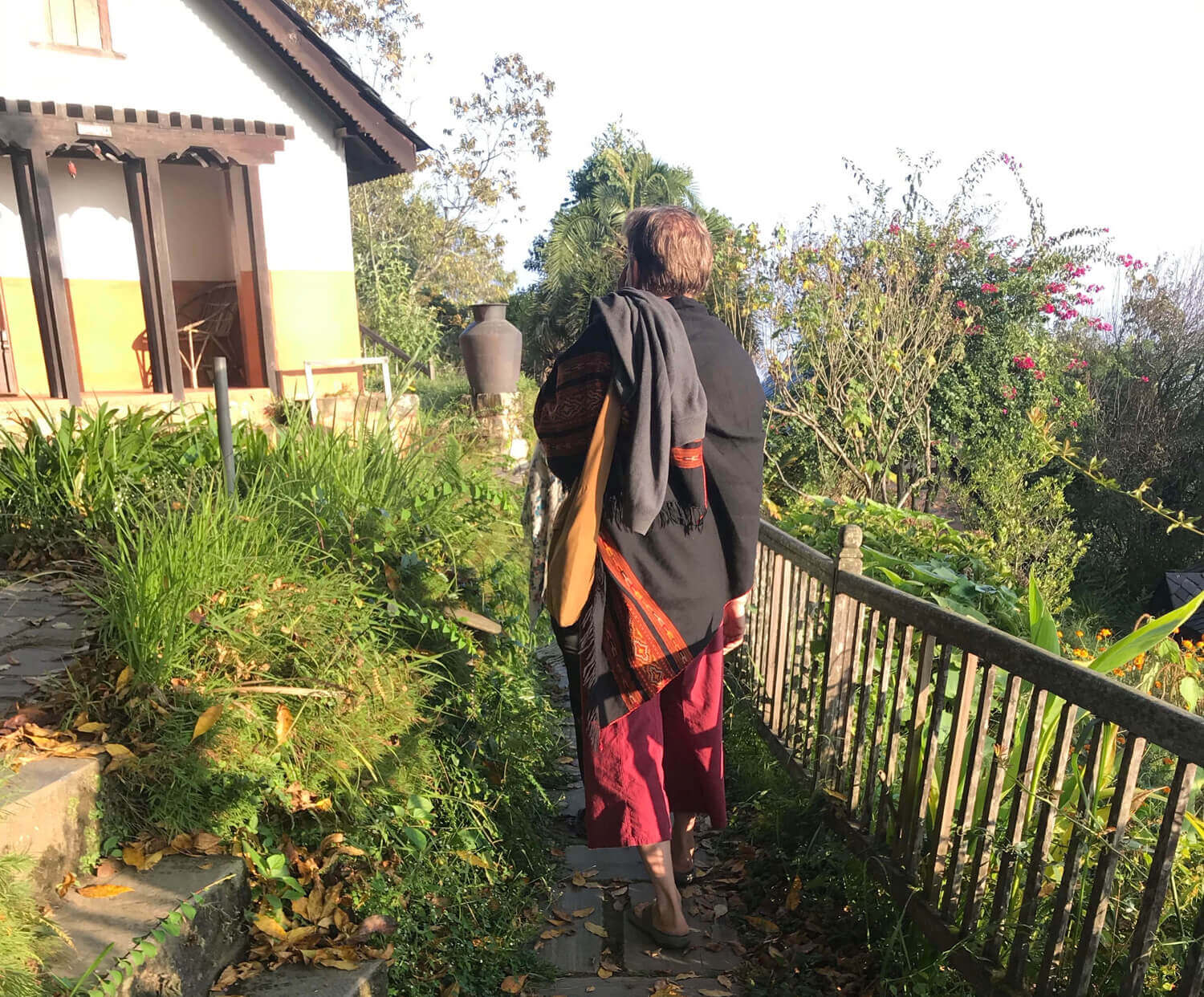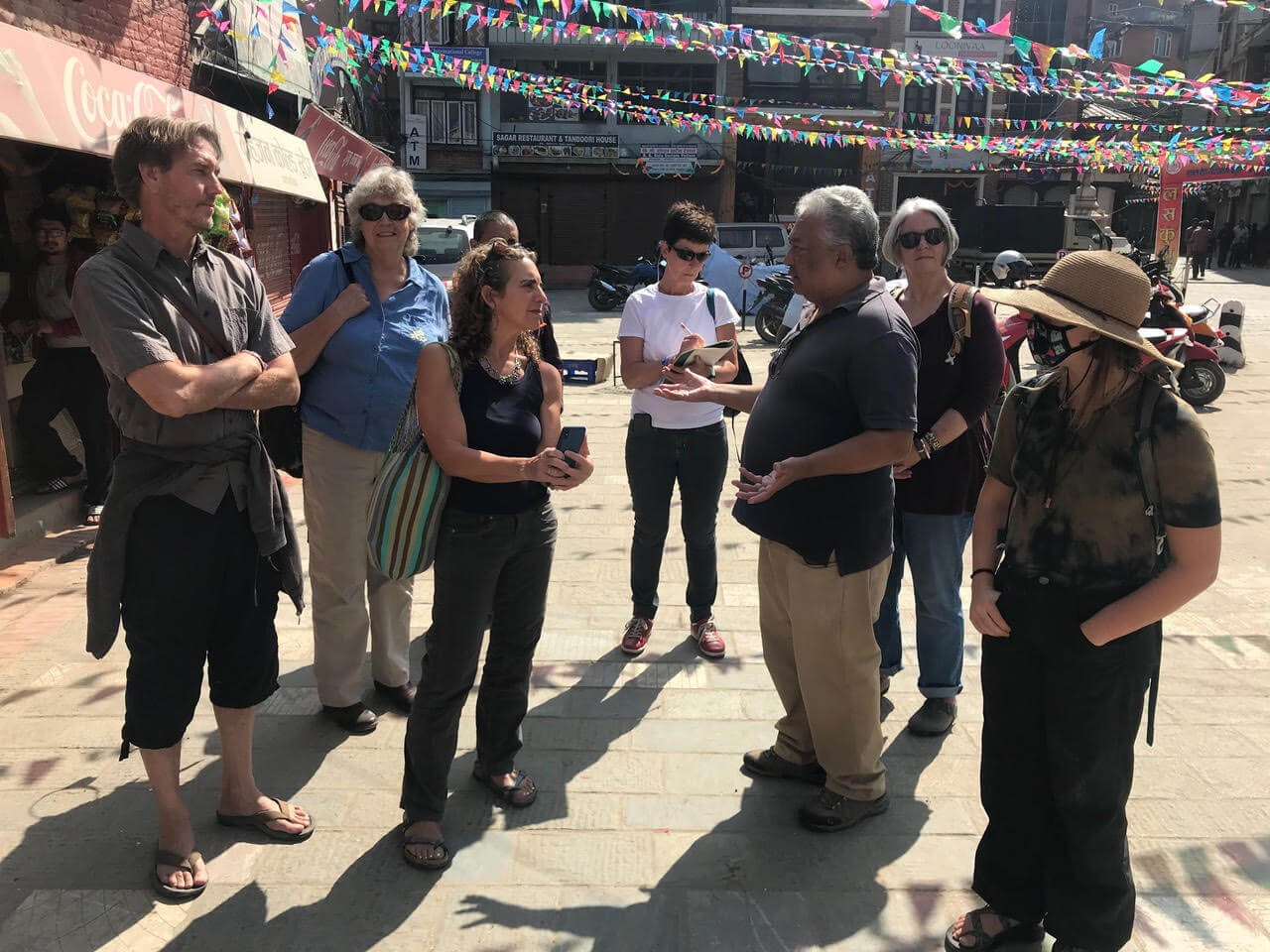Writing about writing
Learning the craft in the fertile spiritual atmosphere of the Himalayan Writers Workshop
“I’d like this one please.” A loud voice in the peaceful garden café in the shadow of Bodnath stupa startles me from my notebook. I see a lady stabbing the menu with her finger.
“But no salami only the cheese, and be sure not to put in any salt, chilli or onion. And make sure the french fries are cooked brown and crispy. And please make me an extra piece of toast because I am really hungry. And don’t forget, no salami, no salt, no chilli and no onion.”
She glances challengingly in my direction as I try to hide a smile, recalling a similar sequence in the movie Five Easy Pieces but in an Alaskan highway diner.
Unlike in the film, the waiter nods obligingly and writes it all down with long suffering. She has a conspicuous mala of prayer beads and baggy meditation clothes, carries a well-used cushion, and wears her Buddhism provocatively.
Despite the American accent and air of aging defiance, I worry for her. As I leave the restaurant careful to avoid her eye, she is still waiting for breakfast.

I am taking a break from the Himalayan Writers Workshop, a ten-day course of writing, meditation, introspection and literary self-indulgence to which I’m becoming addicted. This is my second time, but I’m still trying to find that elusive space to write my own memoirs.
My poet pal, James Hopkins, has interrupted his Buddhist practice to gather together an unlikely group of committed North American ladies and bookish gents to bask in Nepal’s fertile spiritual atmosphere. Devised by James and offering several courses a year led by various literary luminaries from the US, his Himalayan Writers Workshop attracts a wide range of overseas students, from aspiring to arrived, from young to not-so-young. What we all have in common is a desire to write more or write better, inspired by the unique Himalayan ambiance.

This October course is promisingly titled ‘Wild Writing, Calm Mind’, and our guest teacher is Laurie Wagner who brings Californian intimacy and relentless honesty to our literary efforts. With bouncing curls, penetrating gaze and feisty grin, Laurie challenges us beyond our comfort zone to push our penned limits, to face our deepest misgivings, to break through barriers, and to throw down words onto that daunting blank page.
Cradled within her carefully woven safety net, tears are not unusual as emotions are unleashed and nerves touched. Laurie stimulates us with selected verses and witty techniques: ‘story slices’ encapsulate a spontaneous moment in time, and ‘wild writing’ where the pen does not leave the page for fifteen unguarded minutes, ‘conjuring up stories that are waiting to be written’.
James embodies the power of poetry, though he has lost the blond greying ponytail. The designer stubble, zen clothing and energetic charm remain. “I’m not as nice as you think I am.” But I disagree. He organises a local begging village to sew cotton quilts to educate their children, and his deaf-mute waitress friend joins us all for dinner, gesturing in distress at the fast-moving conversation.
“I’ll tell you everything later” he signals her back, his hands flying. Yellow petals float in a brass bowl. “I bought the roses around the stupa this morning - why are they wilting already?”
During James’ early morning meditation sessions, we calm and awaken our writing senses. He helps us understand how Rinpoche teachings and Buddhist detachment can reveal unexpected truths - just be aware, let go and listen. Tempered with: “We all need a dose of chaos.” Circling Bodnath stupa at dawn we follow him in silence, focussing on sounds or smells. No wonder eavesdropped café conversations become so vivid.

The rest of the workshop days are spent on sightseeing walks to assault the senses, guest lectures to arouse contemplation, and structured exercises to write, read, listen, edit, prune, narrate, share and trust. “Connecting our wild voices,” as Laurie calls it. We continue the conversation in libraries, perched in teashops, gathered on temple steps, around sunny outdoor tables, and on cane chairs in gardens full of marigolds.
We participants inhabit hotels near the densely divine centres of Swayambhunath and Bodnath, before progressing to the open greenery and starry skies of Namobuddha. Sipping lemon grass tea amidst hills receding in waves of blue and grey, the local Namobuddha cottages are too small to swing a cat or perform a downward dog – I know because I tried. But the undisturbed hilltop resort is perfectly chosen for meditating and writing purposes.

During a group walk through the back alleys of Patan escorted by the incomparable fellow-columnist in this paper Anil Chitrakar, I reflect on the value of seeing familiar sights with fresh eyes, and embracing unanticipated outcomes with courage. My first Himalayan Writers Workshop was with travel writer Eric Weiner three years ago, and the laboriously crafted piece I read out on our final night resulted in the first of these Nepali Times So Far So Good pieces. That was 72 fortnightly columns ago.
But I’m still trying to get started on that memoir. Singer songwriter Patti Smith wrote an entire book, mainly in a café drinking black coffee, on how hard she found it to write a book. How many times have I been told: “You have such an interesting life, a ringside seat at early conservation and tourism events, what changes you must have seen over 45 years in Nepal, all those historic people you met, and so many entertaining stories. You simply must write it all down into a book.” Must I?

www.himalayanwritersworkshop.com
Lisa Choegyal is a Brit who has made Nepal her home since the mid 1970s. She has been writing these bi-monthly columns, So Far So Good, for Nepali Times since Feburary 2017. © LisaChoegyal

writer




